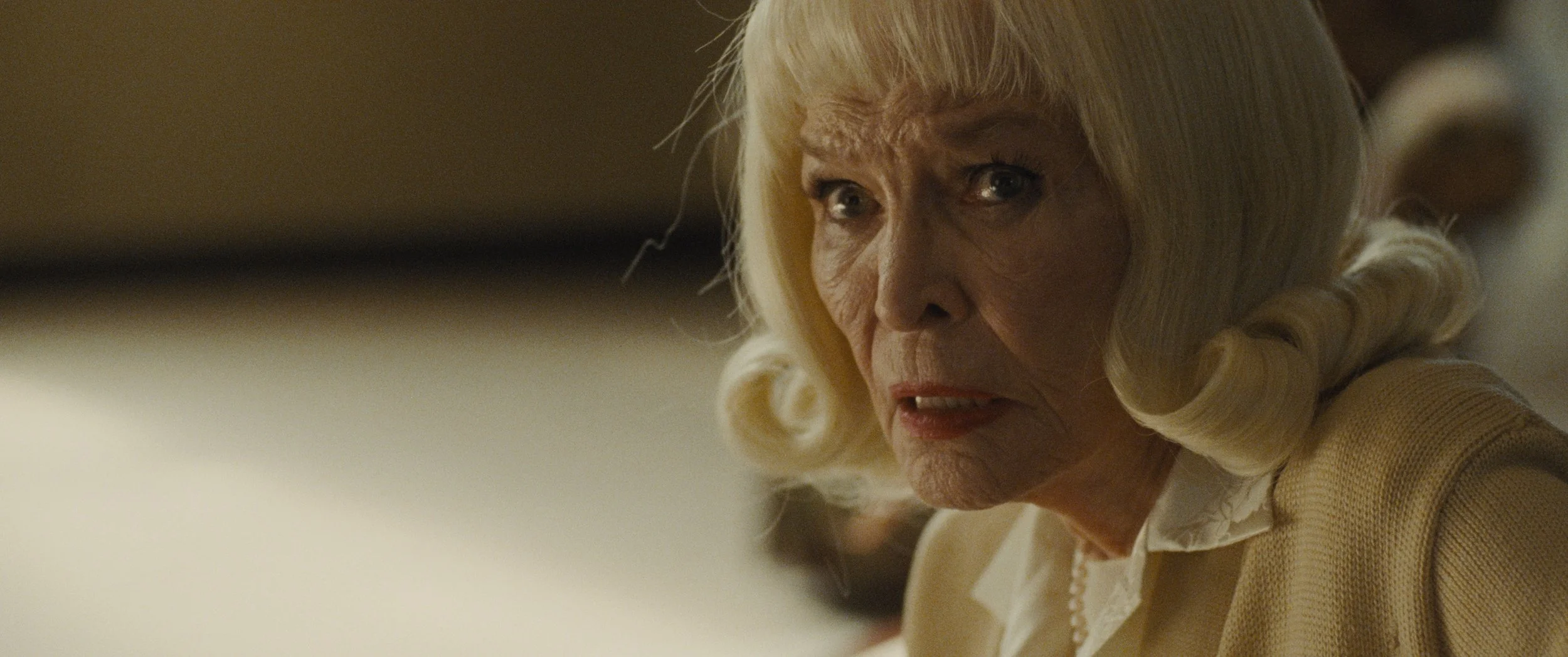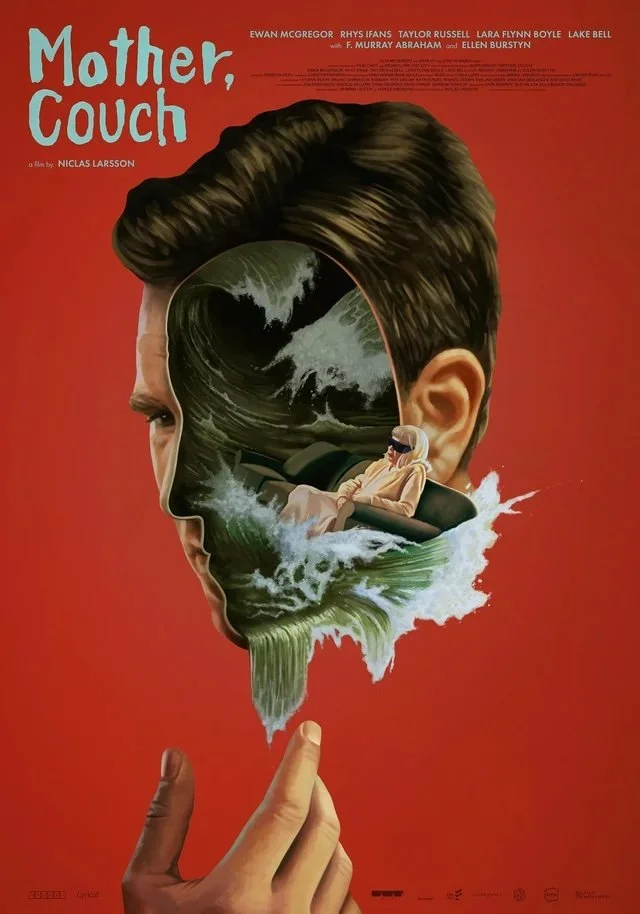Mother, Couch: Niclas Larsson's Lyrical Exploration of Family and Memory
“I have my grandmother’s chair here. I don’t like that chair, but I love my grandma,” Niclas Larsson tells me as he points somewhere out of frame. He sits in his office, a whiteboard with story ideas behind him. Furniture, and more specifically, the liminal labyrinth of a furniture store, became the vehicle through which Larsson tells the story of family and grief in his directorial debut, Mother, Couch. The film is an American production (shot in the furniture store capital of America, North Carolina) by a Swedish director, (very loosely) based on the Swedish novel, Mamma i soffa by Jerker Virdborg. Larsson notes that Virdeborg’s story provided the jumping off point and the metaphor tying mother to couch, but the rest of the story is his invention and came to life thanks to performances by Ewan McGregor, Ellen Burstyn, Rhys Ifans, Laura Flynn Boyle, Tayler Russell, Lake Bell, and F. Murray Abraham. Glancing back at his grandma’s chair, Larsson notes how “memories can disappear. Objects, as in furniture, stick around. We can attach emotion to these pieces, but they can also be a burden. They linger in one's life through generations.”
Larsson pulls influence from the dramedies of the early aughts (13 Going on 30, Freaky Friday) as much as he studies the frames of Buñuel, Fellini, Billy Wilder, or more contemporarily Paul Thomas Anderson. The filmmaker combines the extended metaphors and magical realism of the former with the mis-en-scène of the latter. From the films of his childhood, he learned the importance of maintaining the metaphor as a thread throughout the film and not falling into the “it was all a dream” trope. The couch, like all the themes of the story, does not disappear, is not forgotten. Similarly, the furniture store itself mutates according to Larsson’s direction (and his crew followed along thanks to a nine-chapter, 140 page, ‘Storm Book’ as Larsson deemed it, which detailed how the story and the space evolved). “The furniture store is a perfect stage for life, for a beginning, middle, and end,” Larsson remarks.
The filmmaker’s poetic sensibilities extend beyond his writing into the production itself. For Larsson, shooting on celluloid is non-negotiable. “We can pretend that a digital image can connect us to the magic,” he says. “But subconsciously, I think we don't buy it. There's a disconnect between a pixel – an RGB, a square – and chemicals. Because we are made of molecules and chemicals and celluloid is as well. Celluloid is magic and pixels are math.” Same too for the sound, Larsson opts for an analog approach, recording everything to tape, and a poetic one, with which he aims to weave sonic themes together, culminating in a boisterous climax for the story (you’ll have to watch to figure out what that means exactly).
Written by: Ellie Powers
Director of Marketing: Gabriela Elder
Digital Project Manager: Madeleine Sabo
Himself a former child actor in Sweden, Larsson approaches directing from this point of view and goes to great lengths (including upwards of twenty takes) to pull stellar performances from actors who are already themselves masters of their crafts. Through his directing style, Larsson insists on ‘misdirection,’ which he incorporates to keep the actors on their toes. Just before the next take, he may give the players incongruent directions or rewrite their lines, forcing them to talk out of rhythm. He likes to throw curveballs to best serve the subject matter. “I love actors,” Larsson urges. “But misdirection only works when actors don’t trust you, because then you know how to f*** with them.” The magic happens, Larsson says, “when the actors feel comfortable, and they feel scared. That’s when you as a director can explore.”
Mother, Couch wrestles with the idea that, as Larsson put it, “it’s scary to talk about death and not forgiving. It's scary to talk about motherhood and not loving.” His style relies on flexible direction for the actors, for the setting, and for the themes of his intricate tale of a family’s grief. Larsson is a filmmaker who constantly finds more layers to the stories he tells. He informs me that he added easter eggs in the film just for himself as he knew he would be watching the film thousands of times before its premiere. For this reason, Larsson encourages second or even third viewings of Mother, Couch for the film to fully resonate. “I see my entire life in this scenario,” he says.

